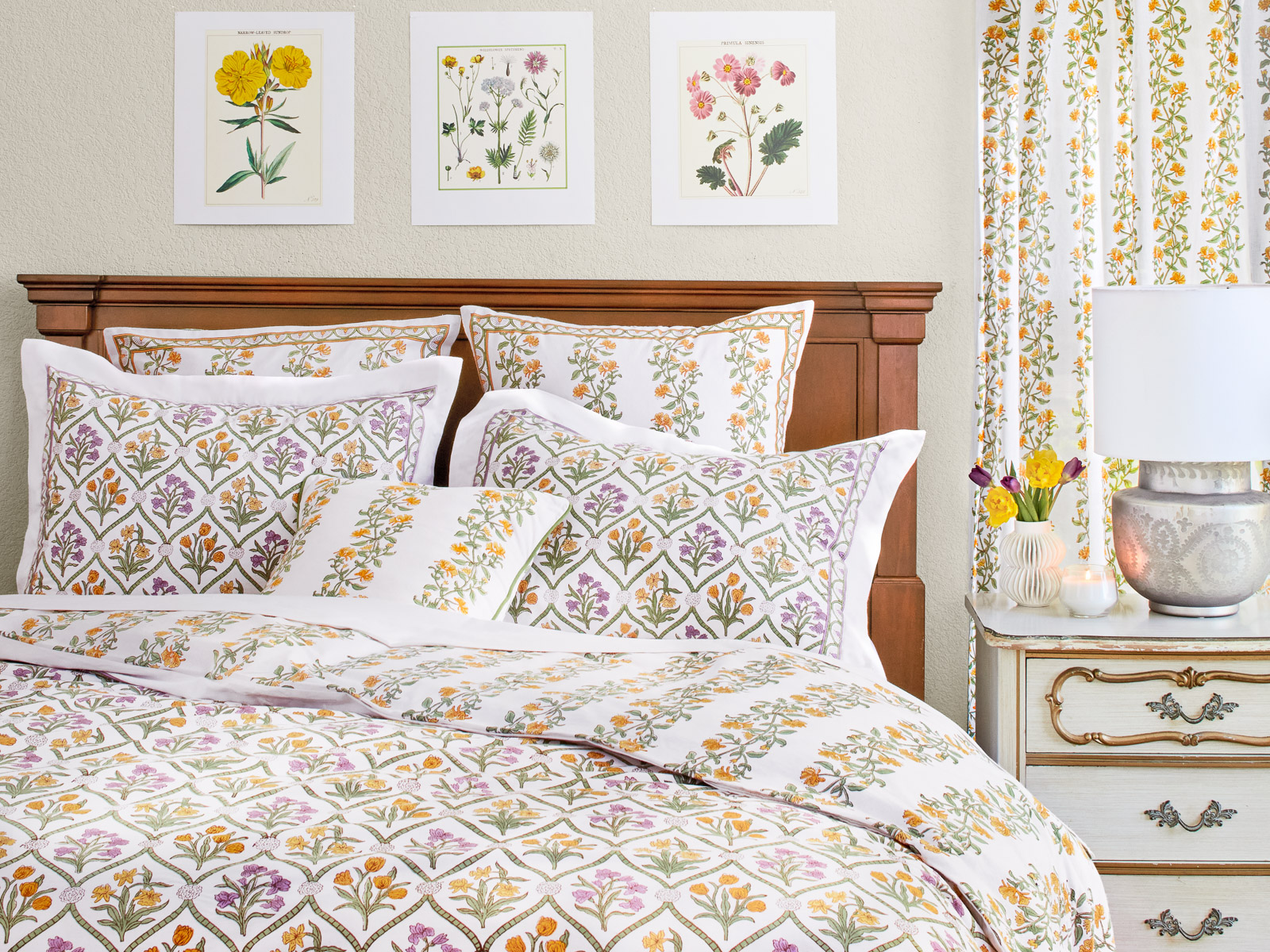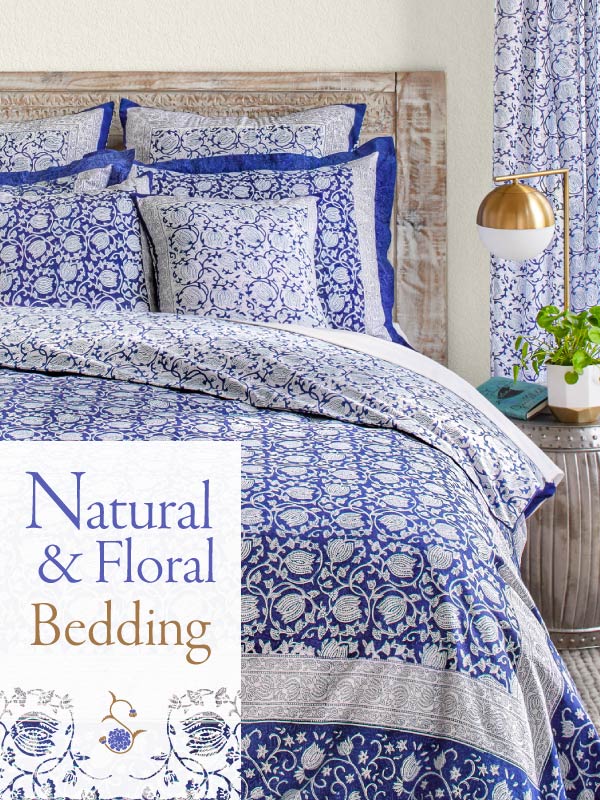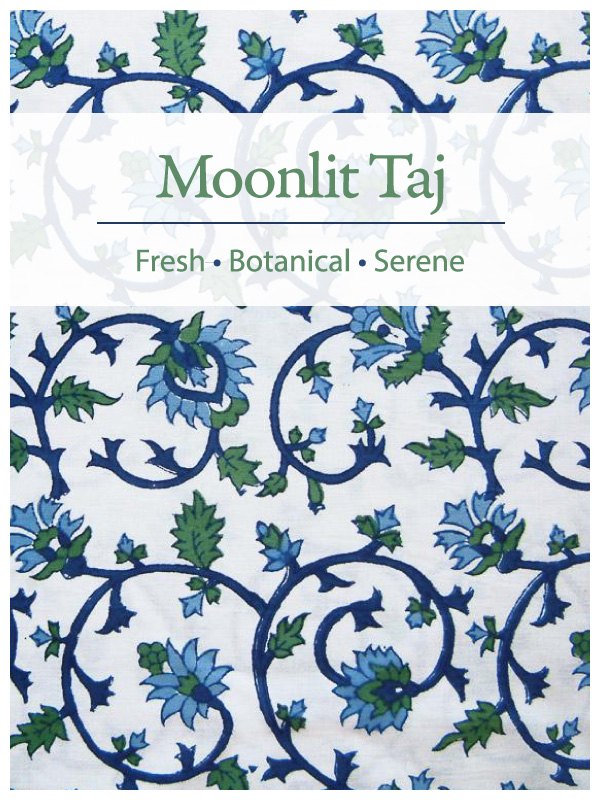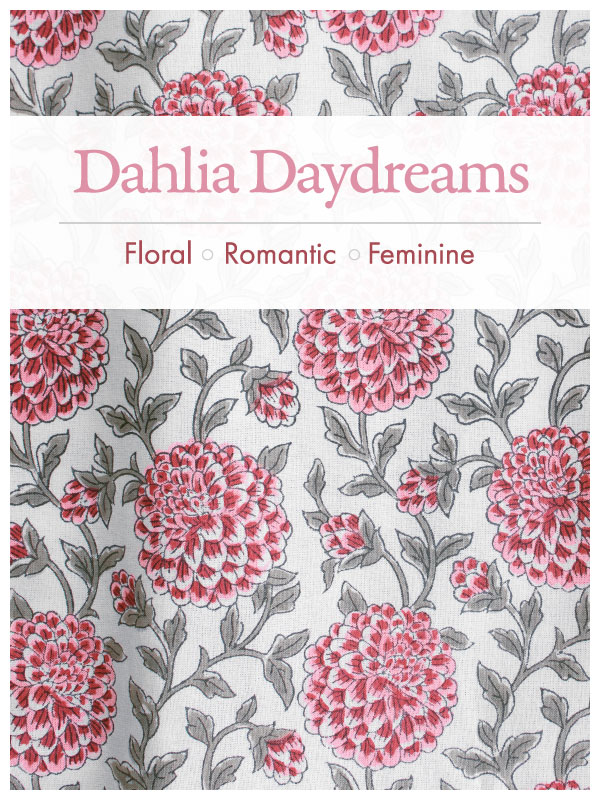Empress Gardens, our romantic, floral print, captivates the senses and soul. This lush print is another magical dream brought to life by Saffron Marigold’s lead designer, Anisha. She’s here today to share her inspirations for Empress Gardens. Along the way, we’ll take a behind-the-scenes look at the making of Empress Gardens in our artisan studio in Rajasthan, India to acknowledge the time, skill, and thought that goes into making our original prints.
Discover timeless romance, and lose yourself in a sun-kissed oasis flourishing with vibrant orange tulips, golden daffodils, and purple irises, the sweet scent of fragrant honeysuckle blossoms sweeping down from the verdant garden walls…Meet Empress Gardens.
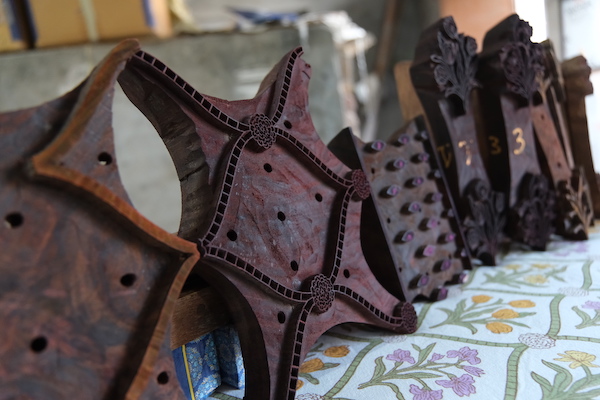
Empress Gardens: a peek into our designer’s mind
Anisha, Saffron Marigold’s designer, is the heart and brain behind all of our collections. For Anisha, Empress Gardens is an attempt to capture the wonderful palace gardens of India. Marble structures surrounded by lush greenery and stately water fountains. Perfectly manicured landscapes complemented by flourishing vines on the palace walls and boldly colored, abundant blooms.
As you walk around under the warm sun to take in all the splendor, royal peacocks strut around, proudly rattling their eye-catching trains, birds chirp with joy, and fountains gurgle softly.
These royal gardens exist various states of duality: sophisticated and lush, romantic and immaculate, pristine and abundant.
Stage 1: Early sketches and light-bulb moments
Using pen and paper, Anisha begins to turn her thoughts into a tangible design.
The inspiration
Palace gardens are an orchestrated display of vibrant blooms and awe-inspiring landscapes, from sophisticated tulips to cheerful and inviting daffodils and exotic irises. Anisha’s hand-selected varieties live in harmony among rows of gurgling water fountains.
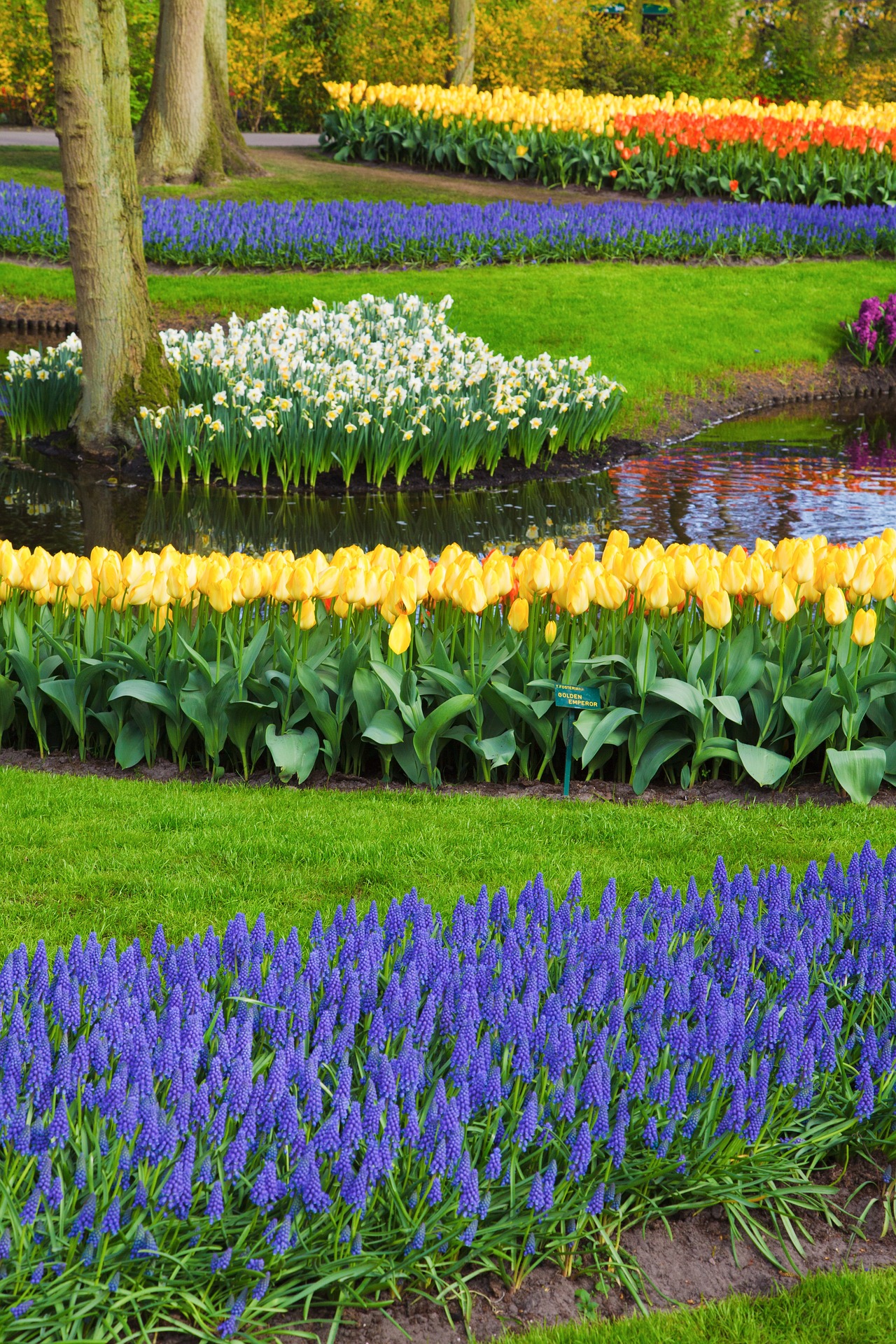
A palace garden is not complete without the sight of a magnificent peacock, proudly strutting his mesmerizing plumage. The peacock originates in India, and has come to symbolize grace, beauty, wealth, and power.
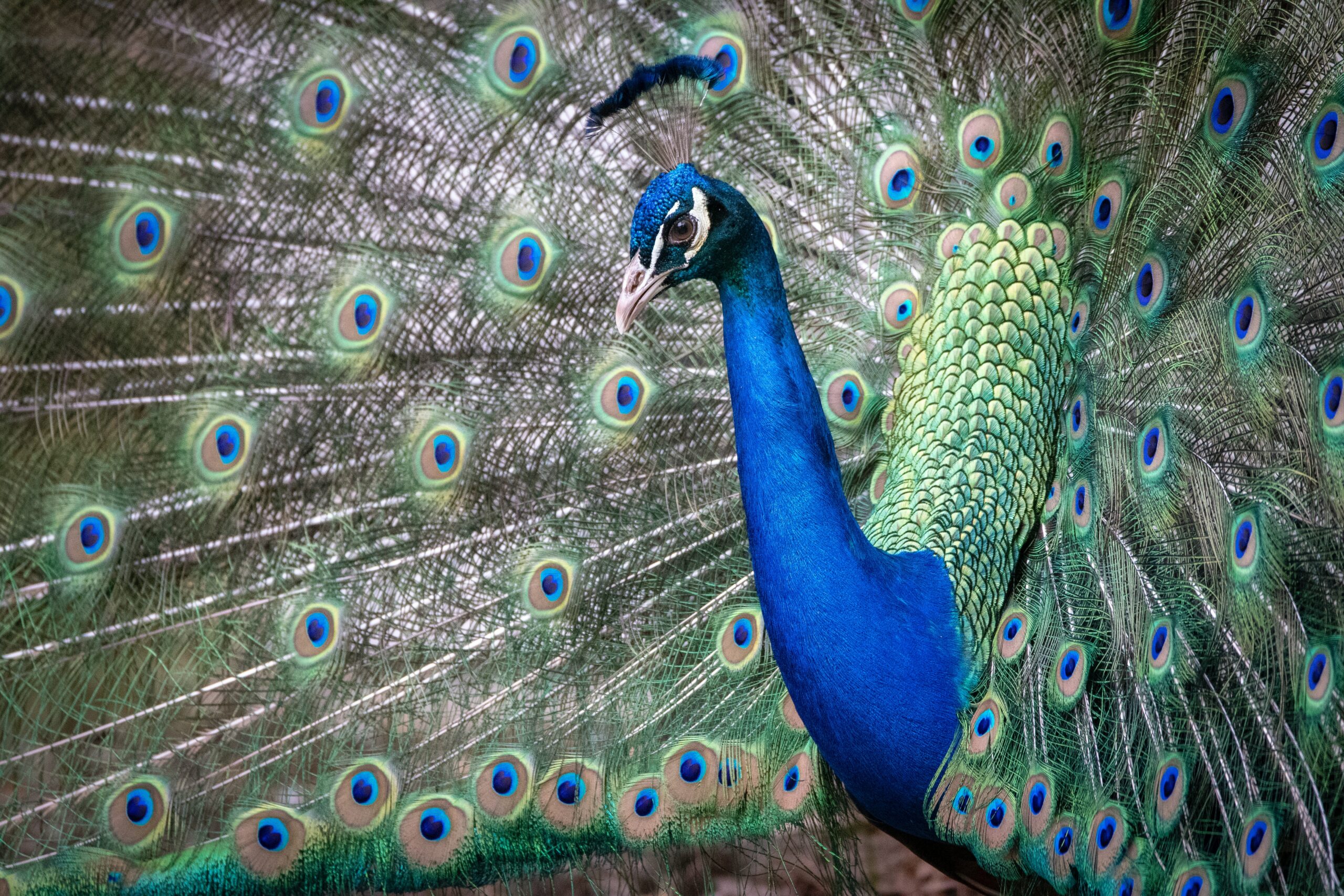
Anisha distills nature’s abundance into three floral bundles: irises, tulips, and daffodils. An elegant trellis pattern captures the well-kept nature of a regal palace garden.
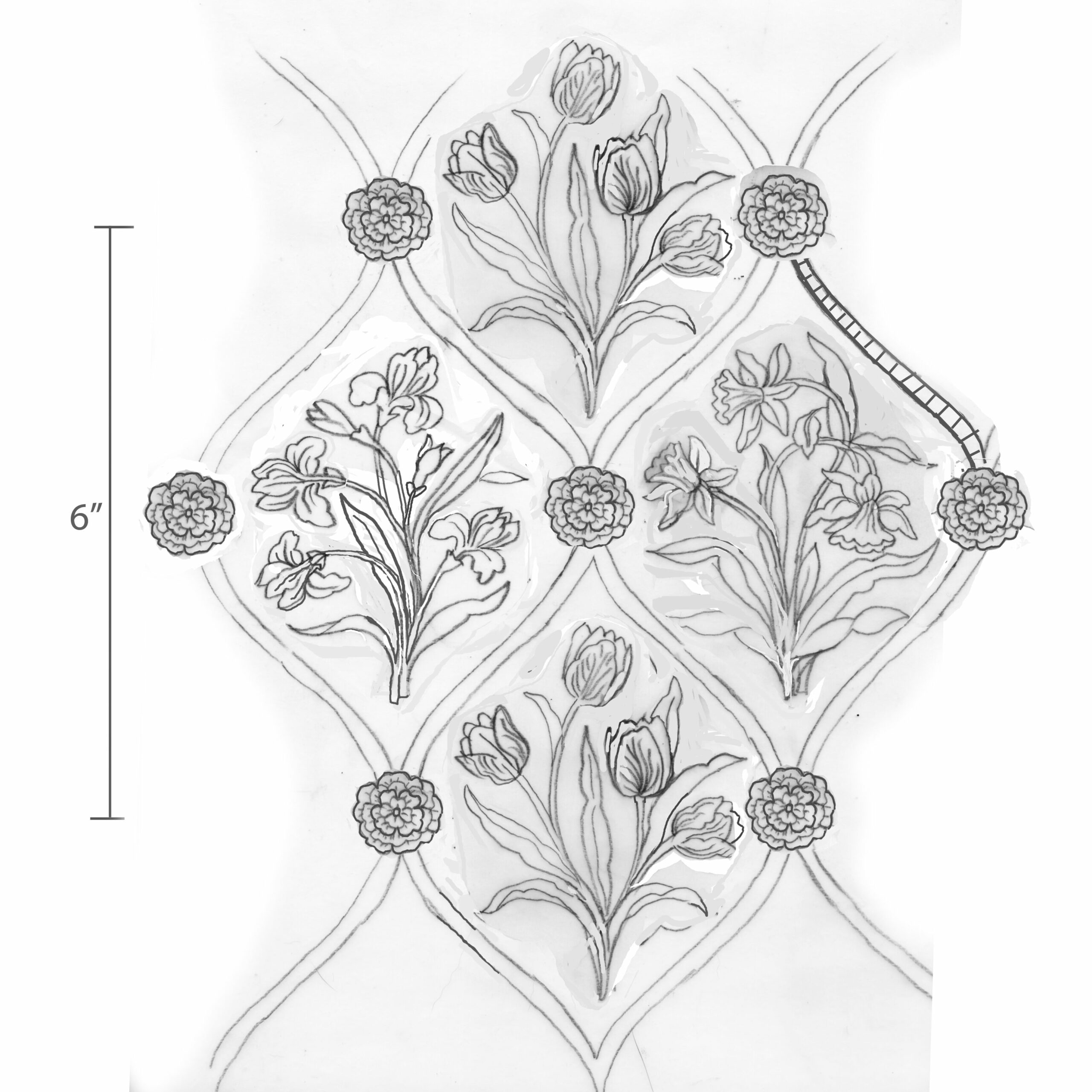
The primary print is a garden bed of bouquets, equal in size with unique color palettes.
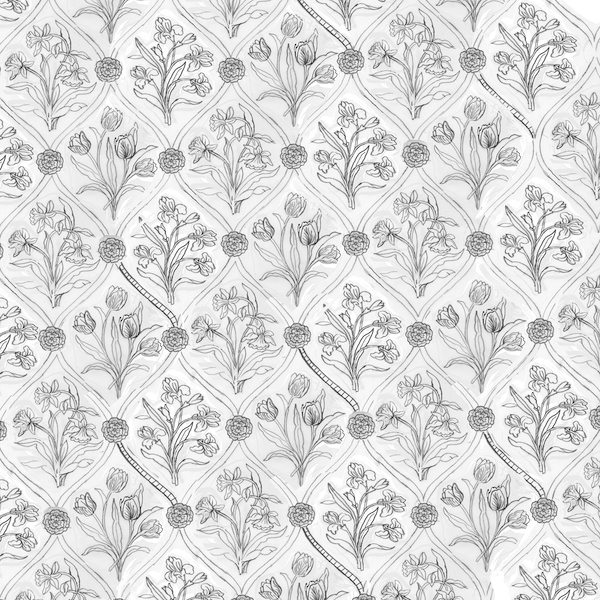
The border blends simplicity and complexity in a scale print that symbolizes regal water fountains and peacock feathers.
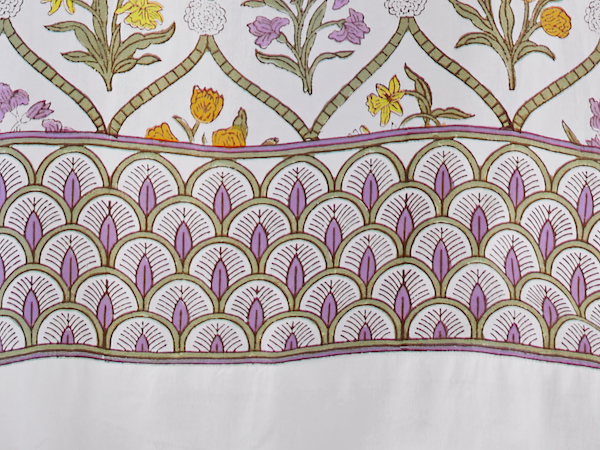
The complementary print
The primary print in Empress Gardens conveys the immaculate aspect of a palace garden, but the complementary feels a tad bit more organic. It captures the abundant and unrestrained growth of blooming honeysuckle vines climbing palace walls, perfuming the air with a sweet, exotic scent.
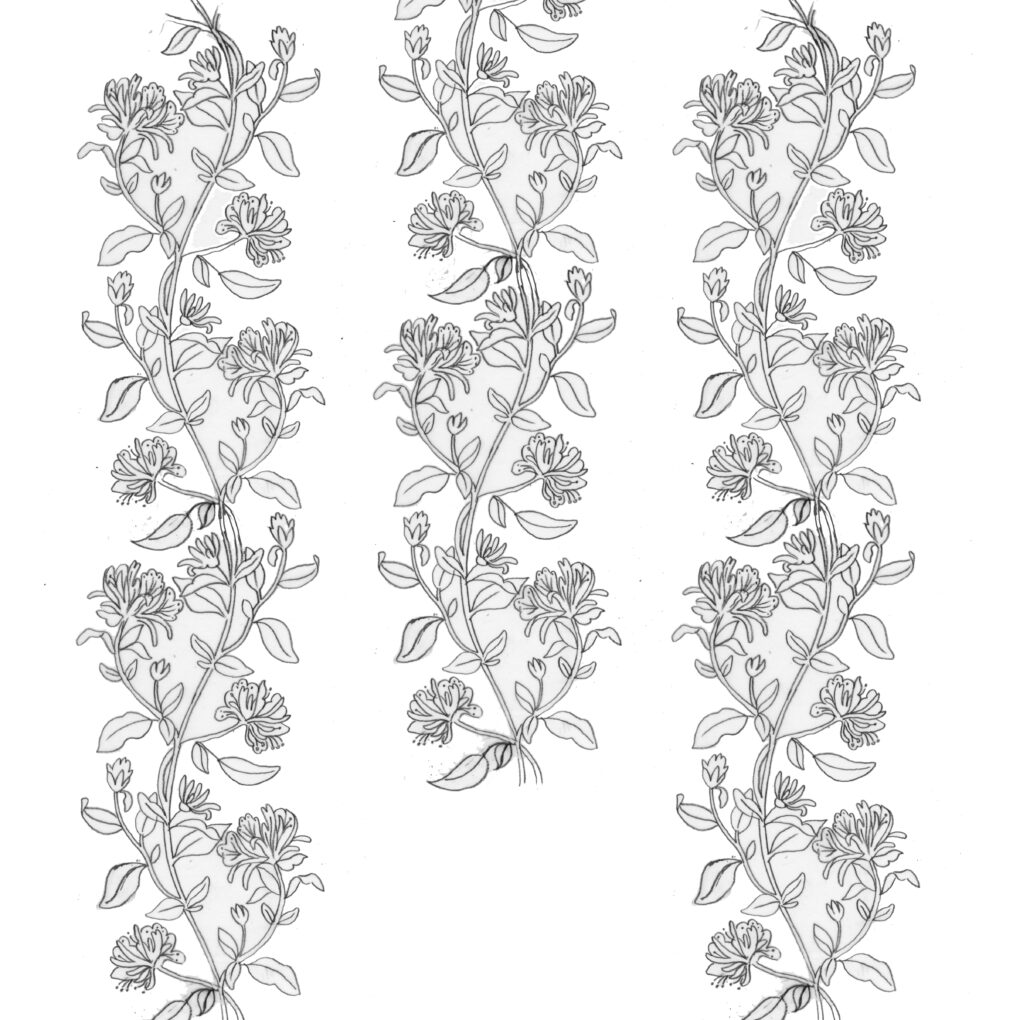
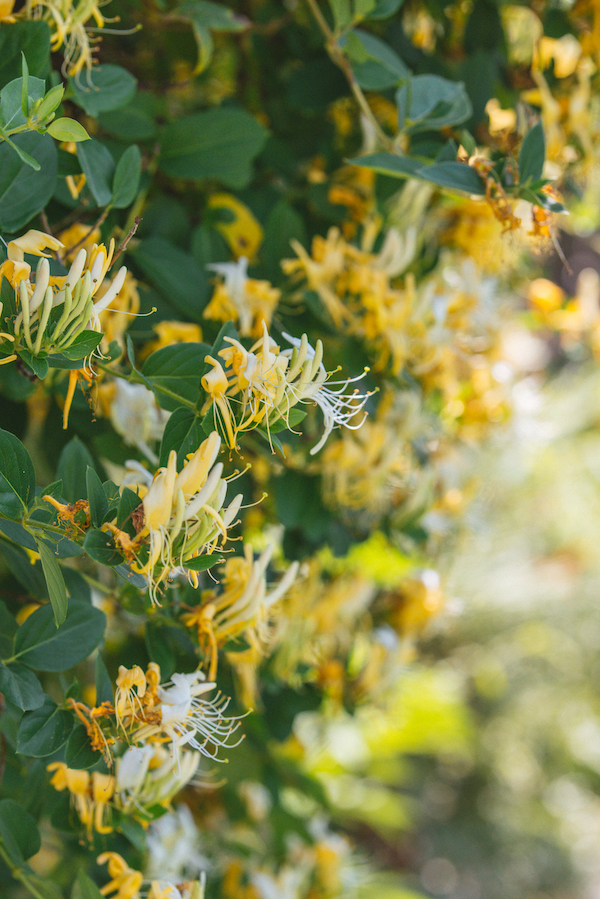
Stage 2: Wood block carving, a centuries-old technique for a fresh print
Wood block printing begins with block carving, an intricate and time-intensive art form. Each element of Empress Gardens must be transferred onto wooden blocks by first tracing the pattern onto the blocks, then carving and chiseling the pattern. Everything is done by hand, and in total, our artisans used 14 blocks for the main print.
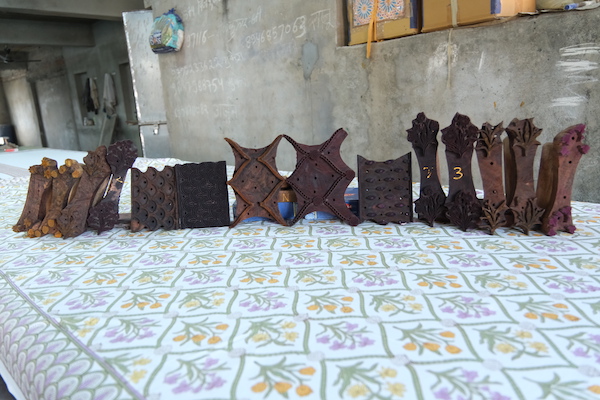

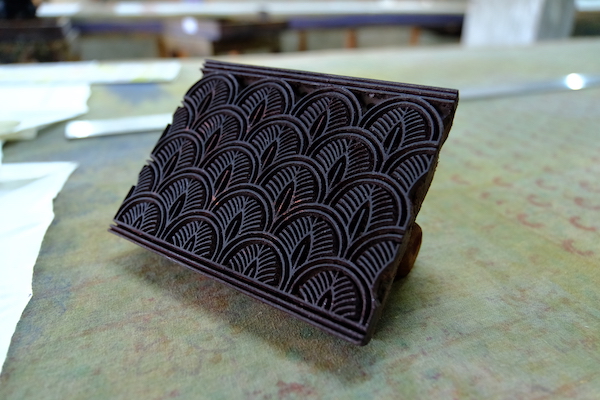
The border pattern resembles rows of stately water fountains that line palace gardens. Upon a second look, it also mimics the mesmerizing feathers on a peacock train—either way, the border pattern requires particular precision and skill.
Stage 3: Block printing
After a few iterations and adjustments, the hand carved, wooden blocks are ready, and printing begins! At last, Anisha’s palatial garden comes to life—in a gorgeous color palette!
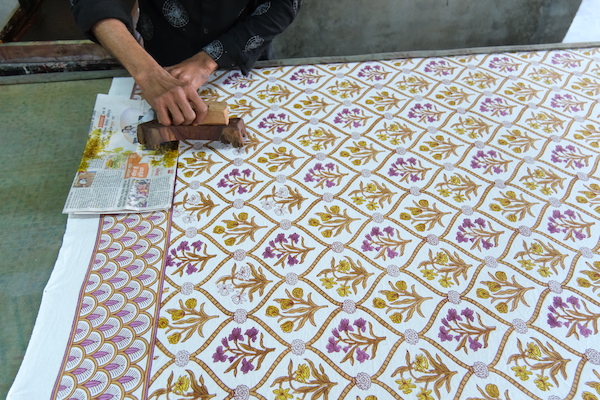
Here are our artisans at work, carefully stamping down each element of Empress Gardens onto the fabric panels with their trained eye. Note the absence of machinery or automated tools—only the artisans’ years of experience can bring this garden to bloom.
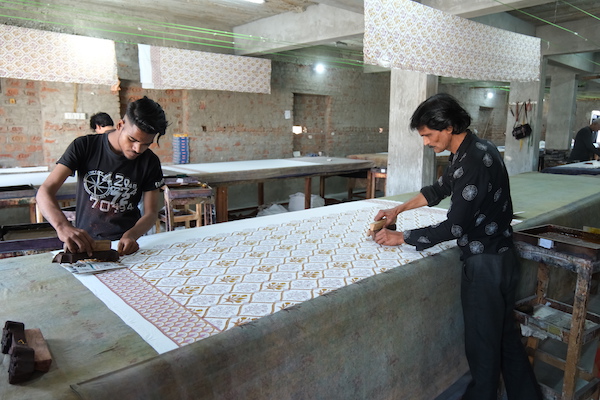
Watching these craftsmen at work is a privilege, and we are always in awe of their attention to detail. Like with every Saffron Marigold print, each linen printing begins with the border.
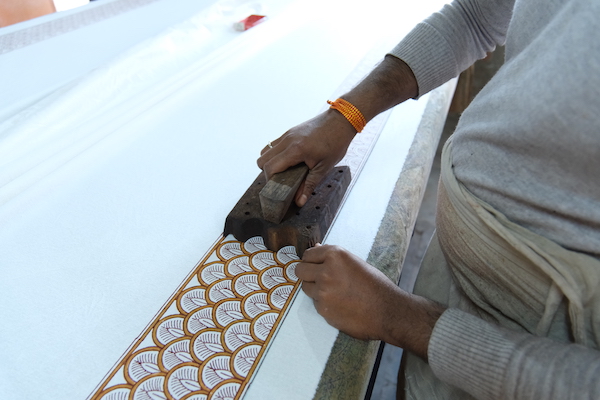
Special care must be taken to the ensure that the trellis framework is immaculately lined up.
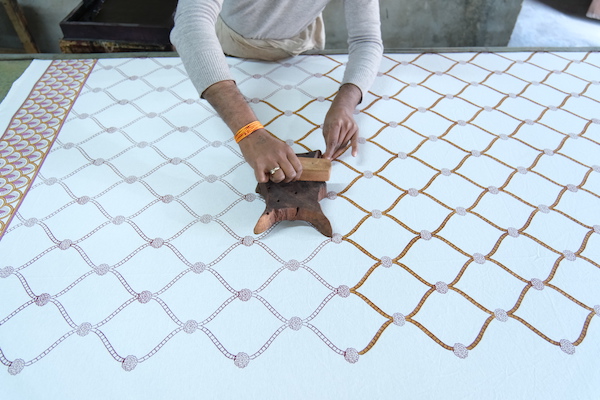
Every design production has its challenges. For instance, our Enchanted collection required 20 hand carved blocks to complete! The Empress Gardens colorway required a few rounds of experimentation to get the saturation just right on both cotton and cotton voile fabrics.
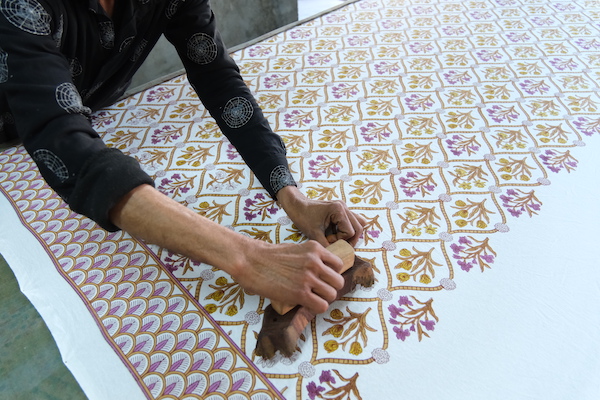
We use three distinct colors for the flowers: purple for the irises, yellow for the daffodils, and orange for the tulips with the same shade of green for the foliage. With green as the color of choice for the trellis pattern and a crisp white background, Empress Gardens exudes a lush, elegant, and romantic air.
The finished product: the elegant Empress Gardens print
Once the border, main print outline, and print colors are all rendered on fabric, the linen is complete. To witness the wonderful process in motion (and all its challenges), we’ve created a short video on the work that goes into making this sophisticated design.



